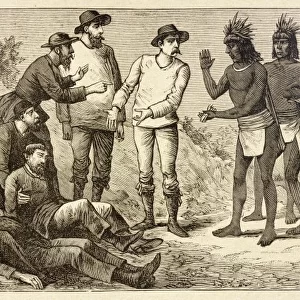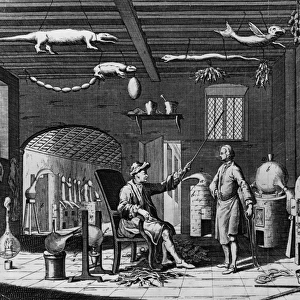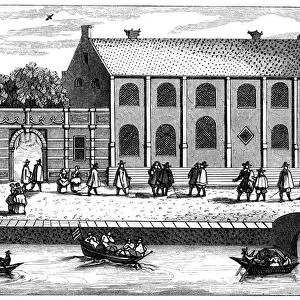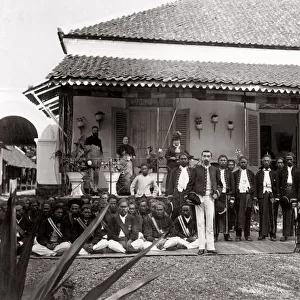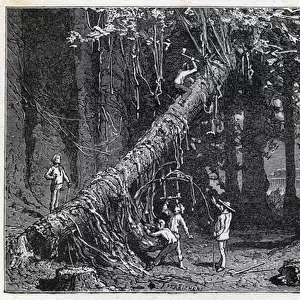Cinchona / Quinine
![]()

Wall Art and Photo Gifts from Mary Evans Picture Library
Cinchona / Quinine
A plantation of cinchona - Peruvian or Jesuits Bark - in the Nilgiri Hills, Tamil Nadu State, India : the governor of Madras plants the first tree in a new plantation Date: 1862
Mary Evans Picture Library makes available wonderful images created for people to enjoy over the centuries
Media ID 14276059
© Illustrated London News Ltd/Mary Evans
1862 Bark Cinchona Governor Hills Jesuit Madras Nadu Nilgiri Peruvian Plantation Quinine Tamil
EDITORS COMMENTS
In this evocative photograph, we witness a significant moment in the history of medicine as the Governor of Madras, India, plants the first cinchona tree in a new plantation established in the Nilgiri Hills, Tamil Nadu State, India, in the year 1862. The cinchona tree, also known as the Peruvian or Jesuit's bark tree, is the primary source of quinine, an essential medication for the prevention and treatment of malaria. The discovery of quinine's medicinal properties began in South America during the late 16th century when the indigenous people of the Andes used the bark of the cinchona tree to alleviate fever symptoms. However, it wasn't until the 19th century that the British discovered the cinchona tree in India, leading to the establishment of plantations to meet the growing demand for quinine. The Governor's presence in this photograph underscores the importance of this moment in India's medical history. Surrounded by a group of dignitaries and locals, he plants the first tree with great care, marking the beginning of a new plantation that would eventually provide a reliable source of quinine for the British colonial administration and the people of India. The Nilgiri Hills, with their lush greenery and picturesque landscapes, serve as the perfect backdrop for this historic event. The trees in the background, already bearing their distinctive red bark, attest to the success of previous plantings and the potential for a thriving cinchona plantation. This photograph is an intriguing glimpse into the past, offering a unique perspective on the global history of medicine and the role of India in meeting the world's medical needs. It is a poignant reminder of the importance of plant-based medicines and the enduring impact of colonialism on the global medical landscape.
MADE IN THE USA
Safe Shipping with 30 Day Money Back Guarantee
FREE PERSONALISATION*
We are proud to offer a range of customisation features including Personalised Captions, Color Filters and Picture Zoom Tools
FREE COLORIZATION SERVICE
You can choose advanced AI Colorization for this picture at no extra charge!
SECURE PAYMENTS
We happily accept a wide range of payment options so you can pay for the things you need in the way that is most convenient for you
* Options may vary by product and licensing agreement. Zoomed Pictures can be adjusted in the Cart.



